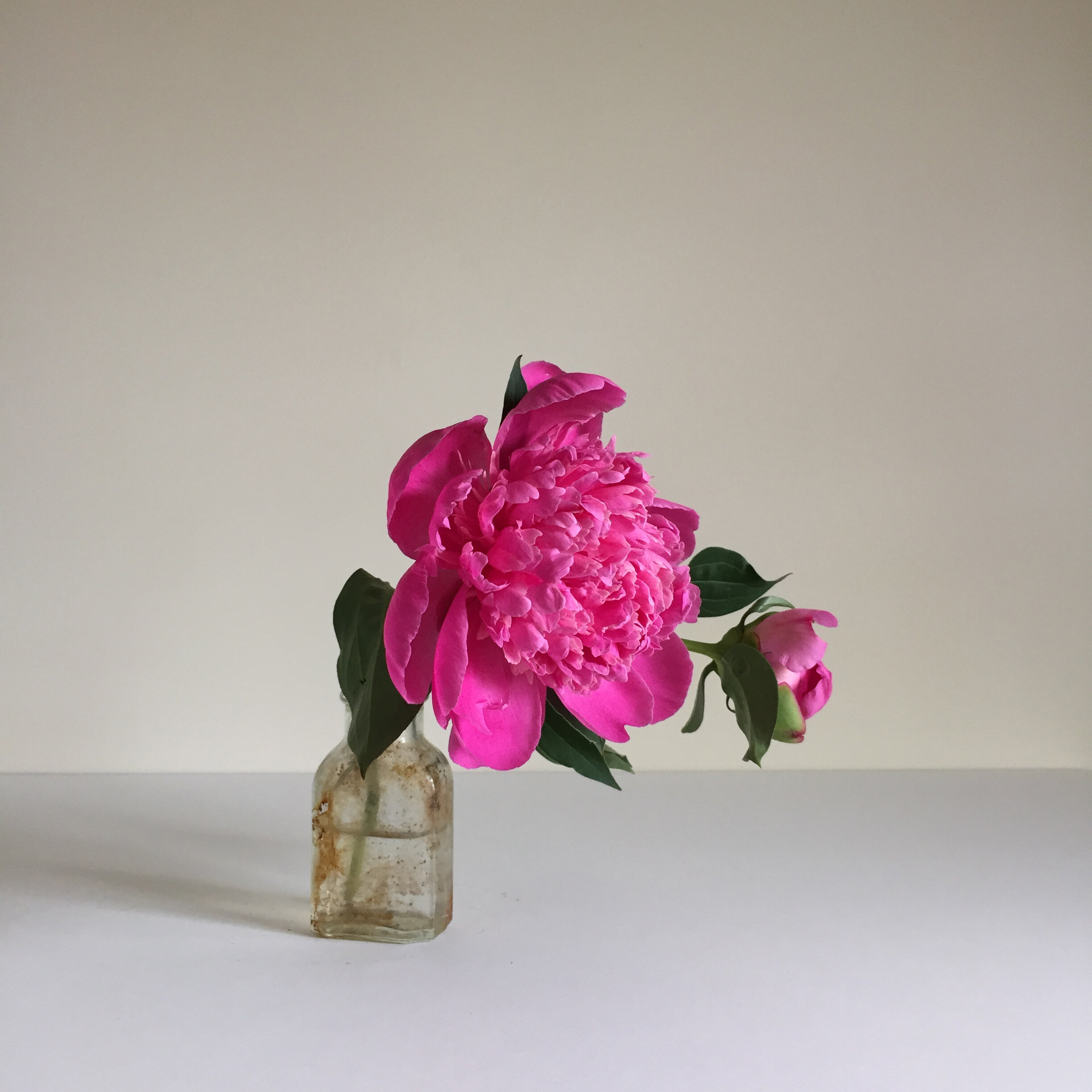The Gardener's Friend — On Paeonia
You are a recipient of Coucou Postale, a postcard series designed to engage and delight readers through stories and art using good old fashioned mail and the magic of the Internet.
Paeonia — Newport, Rhode Island, 2014
This has been an unfortunate time of great mourning for myself and many others around the world. Writing these bloom stories each month has been a salve to my heart, and I hope yours, too.
This month’s bloom is in memory of Gail R. Pozin. Gail was born on June 30, 1942. Although we were not related, she was my mother’s dear friend, and always Great Auntie to me and my five siblings. During my time in Florida, I had hoped to see her at an annual interfaith tea her synagogue hosts, but it was canceled due to the pandemic, which would ultimately claim her life. May she be remembered as someone who fought this horrific virus with every part of her being, thrashing even in a semiconscious state, until she was taken from us on May 20, 2020. Like the peony I've written about—seemingly delicate—she was anything but, and our memory of her strength will always endure. Aleha ha-shalom.
Flowers and culture are intertwined. In the early part of the 20th century, fashion icon Paul Poiret, mixed Chinese textile patterns, which included embroidered peonies, into his designs. In doing so, he launched a trend that would persist into the next century, and perhaps well beyond. But some flowers more than others left the garden for our houses. The peony is among them.
Long before Italian explorers brought the peony from China where it would later grace wallpaper, and hundreds of years later, social media feeds, the peony was widely poplar in ancient China:
“Only the peony is worthy of being called the ‘Beauty of the Empire’”, a poem proclaimed from the Tang dynasty (AD 618-907).
More than just a symbol of the “Beauty of the Empire” in China, the peony was also part of beauty regimens. Extracts from petals were used in cosmetics and perfume, while for women, roots were used in traditional medicine to regulate menses and enrich blood. Today, herbal practitioners continue to prescribe bai shao yao (white peony root).
Despite the flower's appeal and 4,000-year-old history, the peony is not the national symbol of China. So what flower is it? I had always assumed the chrysanthemum or some kind of spring tree blossom, and I was right. In 1964, China’s first president, Sun Yat-sen, selected the plum blossom as an homage to his “Three Principles of the People” and the country’s newly formed governing structure following the country’s lengthy imperial domination.
I often think about how we came to the decision to align nations with the flower world. There’s Acacia pycnantha, more commonly known as “Golden Wattle,” for Australia. Cheery sunflowers for Ukraine. And since the 12th century, the iris for France. It wasn't until 1986 that the rose was chosen as the United State’s national flower. Why choose one at all?
If humans are anything, it’s sentimental. Driving home to Florida in January more than a decade ago, the sweet scent of orange blossoms instantly connected me with home. It may sound romantic, but on the altar of consumption, it was an homage to the state’s cash crop. The flower, while not native, was adopted as its floral symbol in 1909, in the midst of a bubble that blight and overseas production eventually burst.
That flowers allow us to continually resurrect the past may be why the Chinese government has distanced itself from choosing the peony, a flower deeply entrenched in not only imperial China, but a completely different way of life. And yet, the plum blossom—itself a sight of reverie in early spring—as a symbol of unity hasn’t been enough.
In 2019, the China Flower Association launched a nationwide poll to shore up support for choosing a new national flower without hiding its bias to nominate the country's biggest and beloved floral export: the peony.
Many voters were astonished to learn that the peony wasn't already their country’s national flower despite the fact that it has dominated everything from design to food—peony tea is exquisite—for several millennia. Not surprising, the peony won. And yet, the huawang or “king of flowers”, its Chinese nickname, may never reign.
The ties of the flower to Imperial China—along with its perceived delicacy underscored in Bai Juyi’s classic poem that “they surely won't survive”—have thwarted its unanimous acceptance by the Communist Party to represent a new China. And that is unfortunate. The scent of peony can be the sort of thing that preserves our memories or inspires a world of dreams.

